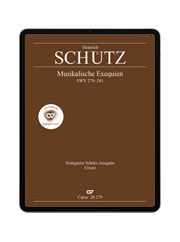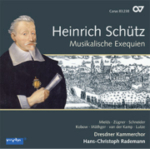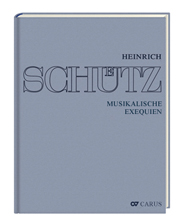Like an Old Friend
Read, how Nikolai Ott developed a kind of friendship with Heinrich Schütz’s Musikalische Exequien …
My first introduction to the Requiem by Gabriel Fauré occurred when as a teenager I played a “gig” together with other instrumentalists performing in a youth orchestra. I remember very well my initial surprise to see that only the lower strings were invited to the first rehearsal (a solo violinist also came later) and that both the violas and the cellos had to play divisi. The resulting dark, warm tone color which Fauré demanded captivated me and even today makes my “cellist’s heart” beat faster.
Fauré composed his famous Requiem at the age of 42 and according to him he did not compose it for any special reason or occasion. The first version received its premiere on 16 January 1888 in the Parisian church of Ste. Madelaine, where he was the choral director. The Requiem was originally comprised of only five movements (“Introït et Kyrie,” “Sanctus,” “Pie Jesu,” “Agnus Dei” and “In paradisum”) and was scored for a rather modest ensemble of mixed choir, a solo voice for “Pie Jesu,” low strings (with a solo violin only in the “Sanctus”), harp, timpani and organ. In the following years the work underwent several revisions and expansions. In 1889, with the addition of the “Offertoire” and “Libera me” (both with baritone solo) the Requiem had already assumed the form in which we know it today. By 1894 Fauré had gradually expanded the instrumentation to include wind instruments (2 bassoons, 4 horns, 2 trumpets and 3 trombones). Instead of writing out a new full score, Fauré simply entered these parts in the blank staves of the autograph score of the first version. Finally, in 1898 Fauré yielded to the repeated demands of his publisher to outfit the Requiem with a more accessible orchestration. In this final revision of the work the winds were increased by two flutes and clarinets each, and violins were also now employed in the “Agnus Dei” and “Libera me.” This symphonic version was premiered in Lille in 1900 (followed by a prestigious performance in the same year in the Trocadéro at the Paris World’s Fair) and it was published in 1901.
The Requiem was already successful during the composer’s lifetime and it’s popularity has not waned since then. This is due to the musical qualities of the work, such as the melodic charm of the choir and the solo parts, as well as the refined treatment of the orchestra, whose successive revisions were not concerned primarily with achieving more volume, but rather with attaining differentiated tone colors. On the other hand, Fauré did something unusual here: he dispensed with the dramatic effects and thundering trombones in the Last Judgment in favor of a more consoling attitude. Moreover, it is appropriate that he chose not to set the entire text of the Mass for the Dead. With the exception of the last verse, “Pie Jesu,” he omitted the “Dies irae” sequence. On the other hand, at the conclusion he added the “In paradisum,” which is not part of the Mass for the Dead, but rather is intended for escorting the coffin to the cemetery. The Requiem ends with this peaceful, angelic song, accompanied by the harp. Not the horrors of death, a final judgment, nor purgatory are the focus of the work, rather the hope of redemption in the hereafter.
Nikolai Ott studies at the “Hochschule für Kirchenmusik” in Tübingen and since November 2014 he also works in the Carus New Media Department.








Leave a Reply
Want to join the discussion?Feel free to contribute!